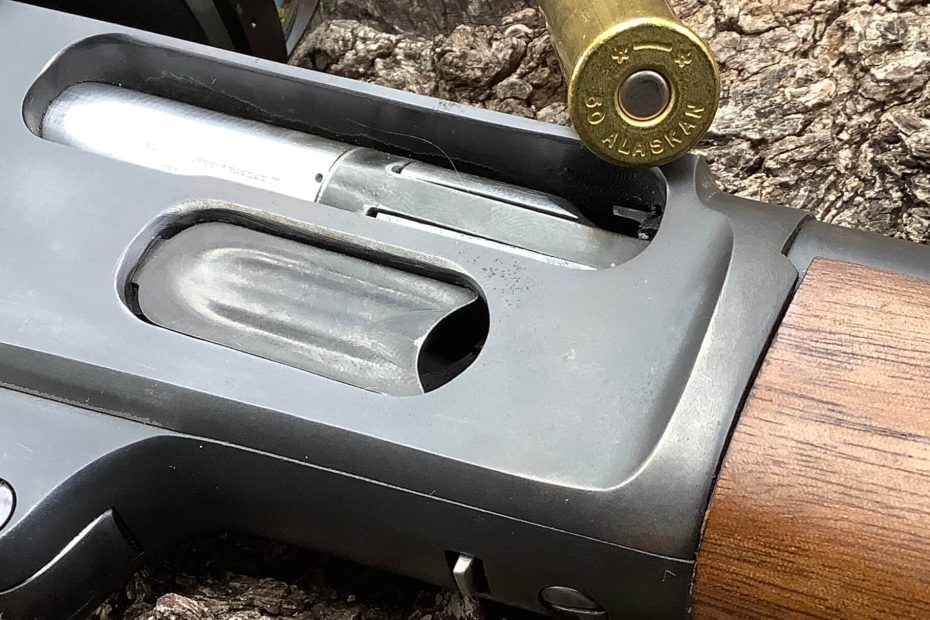
Big bore leverguns have easily been popular for the last 75 years here in the USA. However, in the last 40 years it seems that popularity has risen exponentially. The 45-70 has gained so much popularity recently that one would think it is the end all and do all Big Bore caliber. Don’t get me wrong it is a good round and one that certainly does it’s tasks well. It’s even been utilized and featured in a major motion picture. In the 70’s and 80’s, It suffered from having poor representation by major ammunition manufacturers when it was utilized in strong modern firearms. In order to reach its full potential you were forced to reload ammunition if you wanted top level performance. The two main rifles used to reach that performance were the Marlin 1895/336 and the Ruger singleshots, the #1 and #3. The Winchester 1886 was also capable of handling more power as well due to its strong double lug lockup. It just seemed to be lost in the mix of suitable rifles, possibly because of collector value or just plain expense to purchase.
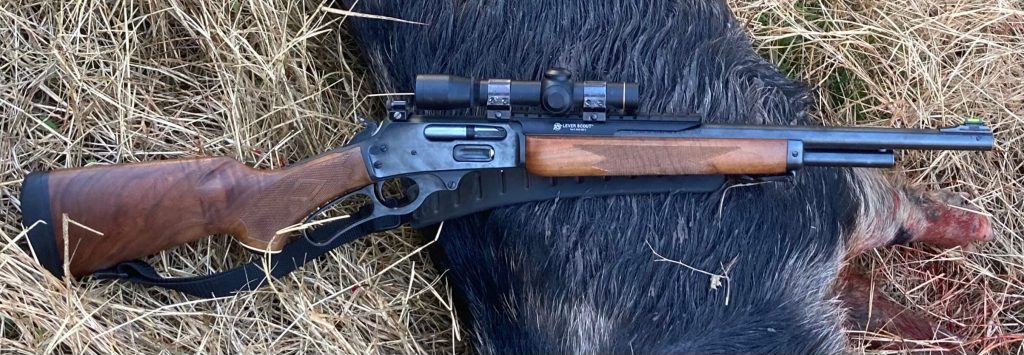
As good as the 45-70 is in a Marlin lever action, and I have an early safetied gun that was originally a 22” barreled gun. I’d had it shortened to 18” back before the Guide gun became available, Alex Hamilton of Ten Ring Precision performed the necessary surgery. Even though it is a formidable gun and I probably don’t really need something else. In my opinion, a better suited option when truly Big Bore stuff needs to happen is the 50 Alaskan.

As an example I give you our current batch of large caliber handguns. While the .45 caliber guns are great all around performers, it’s the .47’s, .50’s and .51’s that are called to duty when Big Bore stuff needs to happen, the same is true of the old African stopping rifles. There are a couple of .47’s that are available from Turnbull, one based on use from the Winchester 1886/71 size action and one from Marlin 1895/336 size actions. There is a least one .50 option from B&M gunsmithing. The 50 Alaskan is actually a .51 caliber and is suitable in both Marlin and Winchester sized actions. It was originally built on the Winchester 1886 and 71 action, but many of the newer built guns are being done on the Marlin action, mine included.
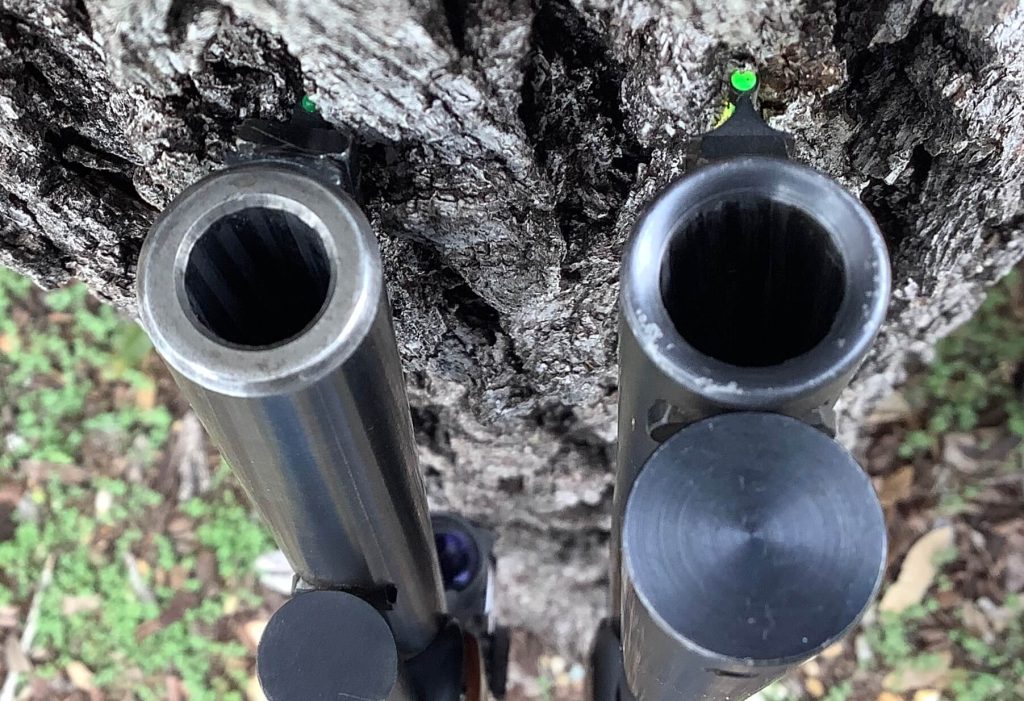
As the story goes Harold Johnson made his 50 Alaskan after receiving an old 50BMG barrel from someone and then fitting it to a Winchester 1886. He had already been converting the Winchester 71’s to his 450 Alaskan caliber, but the new barrel sparked a new idea, and the 50 Alaskan was born. Harold “Bill” Fuller provided the necessary reamers and made dies for the new caliber. Johnson also used cut down 50BMG projectiles, that would weight out to approximately 450gr. This homemade bullet worked well, apparently never recovering any from game he took, and never having any issues with them either. Supposedly, Johnson only built one .50 Alaskan, and apparently he didn’t even name it. Fred Huntington of RCBS coined it the “Alaskan” during one of their hunting excursions. The “Harold’s” content to simply refer to it as the Fifty.

Some of the gunsmiths that are currently doing the conversion are Nonneman, Forkin, Wild West guns, McGowen and Turnbull. My rifle was built by Nonneman, it was built on my very first deer rifle I ever owned. A Marlin 336RC, that was originally chambered for 32 Win. Spec., I knew I would never hunt with the rifle again in its original chambering but also knew I would never get rid of it. So using it as the basis for my Alaskan makes it that much more special to me. Overall length is 38”, weight is 6.9 pounds, making it a light easily carried and manipulated rifle. The original stocks were in good enough shape to keep, although the forearm was thinned down from the thicker shape it had previously. I went with a 20” barrel and full length magazine tube underneath, so it looks like a normal Marlin lever action, until you peer down the muzzle. The front sight is a green Williams fiber optic so even in dimly lit or low light conditions the front sight is easy to find. The rifle is an older waffle top that is still undrilled and tapped, so the rifle wears a Williams receiver sight with a modification of my own making.
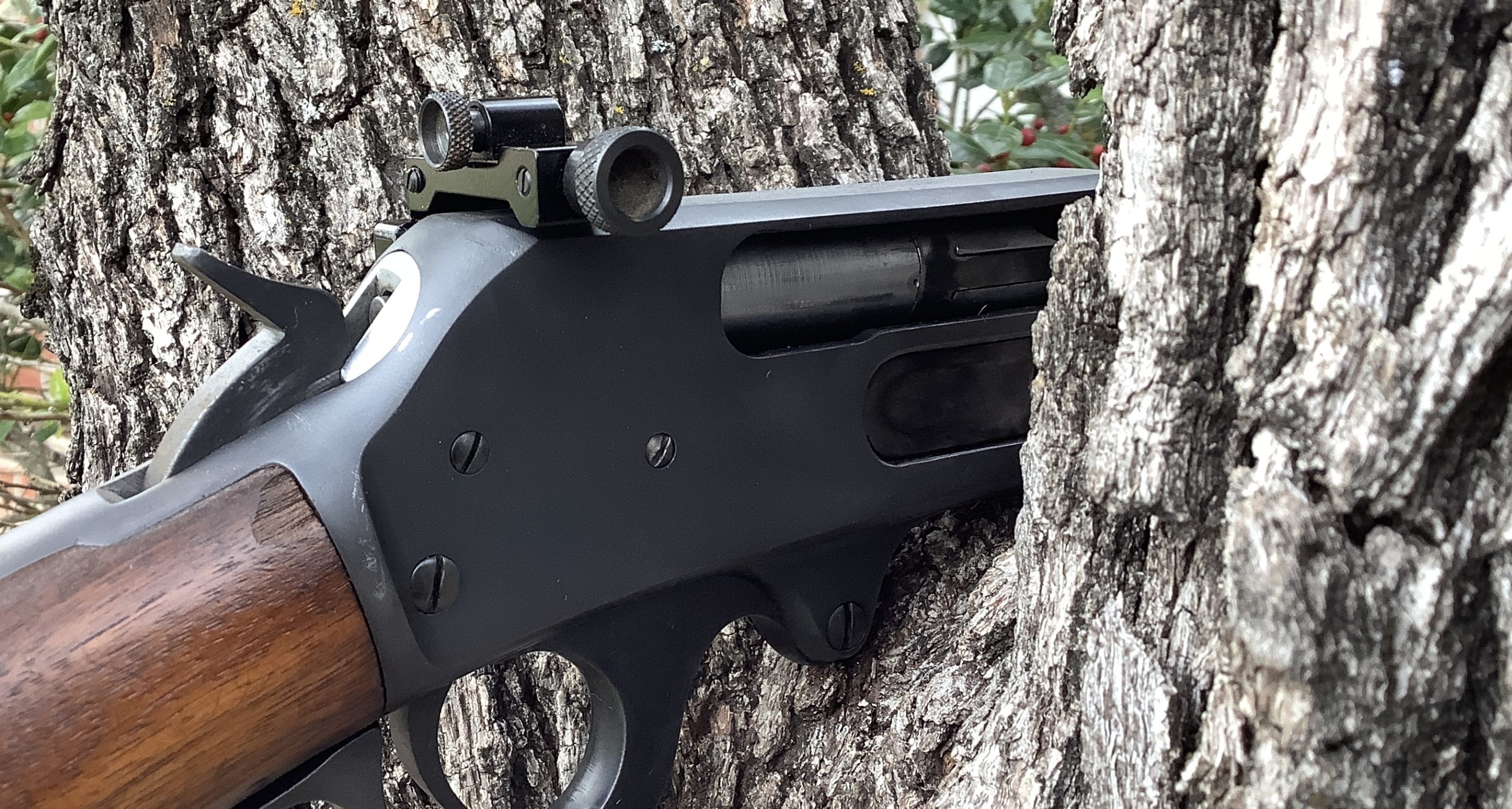
I purchased an extra Williams L-shaped arm from EBay and then mounted a small reflex sight base to the stripped arm. Once screwed down and Loctited into position the reflex base is solid and allows a Burris FastFire reflex sight to be utilized as a primary or back up sight system. I have contacted a manufacturer about making this reflex sight set up a production item and was told they actually have something very similar in the works. Turnbull Restorations has a similar product but it is fixed and not adjustable or interchangeable. Those of us that suffer from aging eyes and cannot clearly see iron sights any longer, this set up is very nice. The red dot also provides accuracy well beyond the capabilities of the gun and caliber. It’s fast, accurate, and almost as small as the actual receiver sight. The receiver sight/reflex sight set up allows for guns that are not D&T’d for scope use to utilize an optic, I’m quite happy with the performance provided.
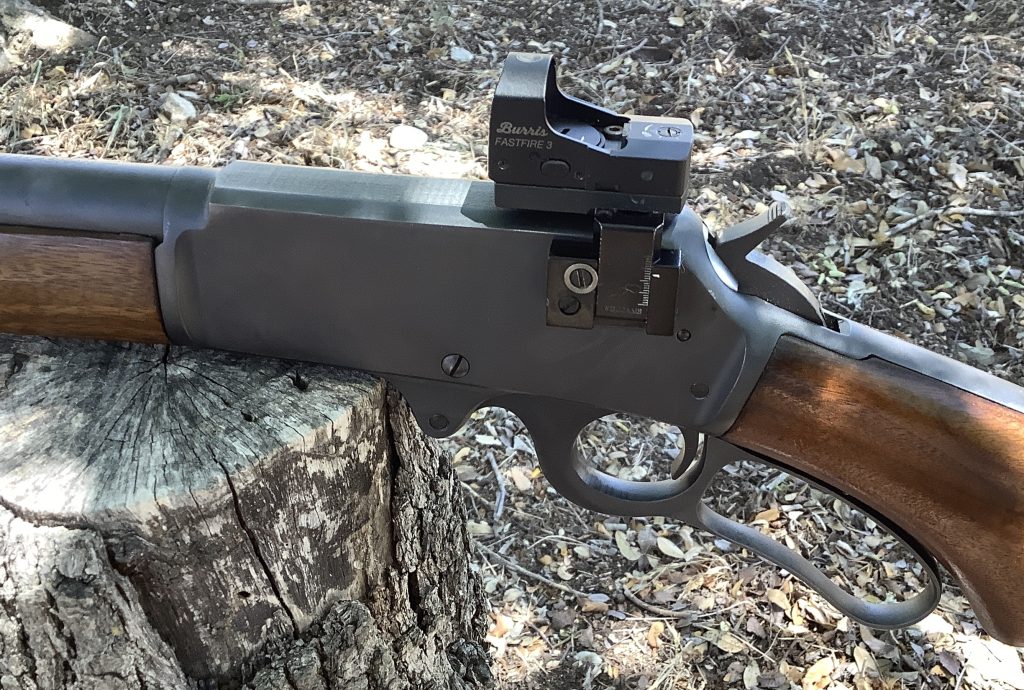
The same bullets that are available for the 500 Linebaugh revolver rounds are suitable for the Alaskan. I’ve used 350gr. WFN bullets for game here in Texas, the big wide flat nose provides a lot of slap when it hits game. The bullet is almost a full wadcutter style , with the meplat being .425”. I’ve also used 465gr. LFN bullets when backing up hunters that we’re chasing much larger game, and my opportunity at them would likely require a lot of penetration. My favorite hunting bullet for everything and every purpose is the Swift 450gr. A Frame. If I were going to Africa, Alaska or anywhere with large heavy boned and potentially dangerous game and using the gun for hunting this is the projectile I’d use. I’ll be booking a Carolina black bear hunt soon and my Alaskan will be making the trip and loaded with Swift A Frames.
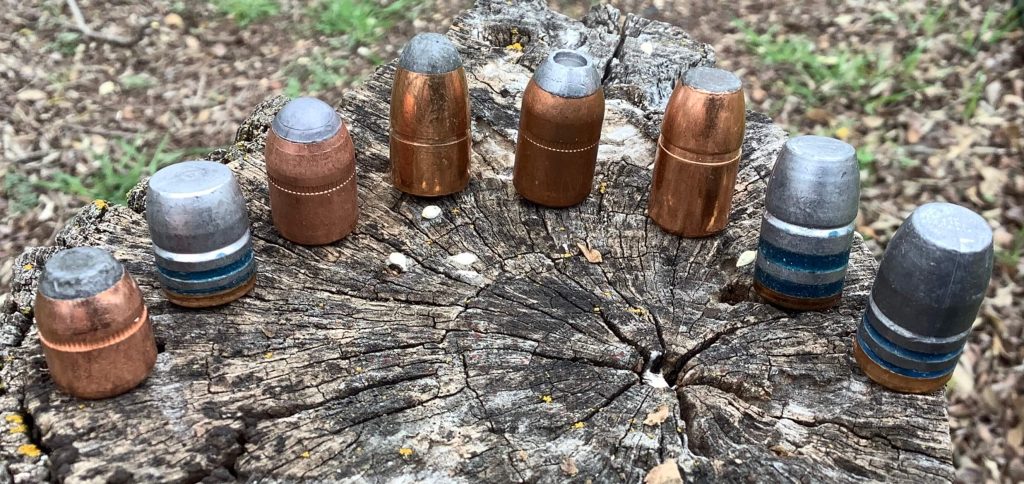
The terminal performance provided by the big bullets is a thing that must be seen firsthand to appreciate. On medium game like deer, choosing a proper bullet for the lighter mass and frame of the animal is very important. On game that is bigger and tougher like feral hogs, elk, bear, buffalo, etc. the right combination of penetration, punch, and expansion is extremely decisive. The velocity doesn’t need to be fast, because you’re moving such a large combination of diameter, mass and stout construction. Complete penetration is almost a given, especially for game in North America. Remember the originator never recovered a single bullet from any of his Alaskan kills. My loads for all my uses are as follows……… All assembled on Starline brass, All using 57gr. of Reloder 7, 350gr. WFN, 450gr. Swift AF, and 465gr. LFN. As you can see I have kept everything simple, merely changing the bullet and keeping the powder charge the same. The powder charge is based on a less than maximum charge for use with 465gr. bullet, making it safe for everything of less weight.
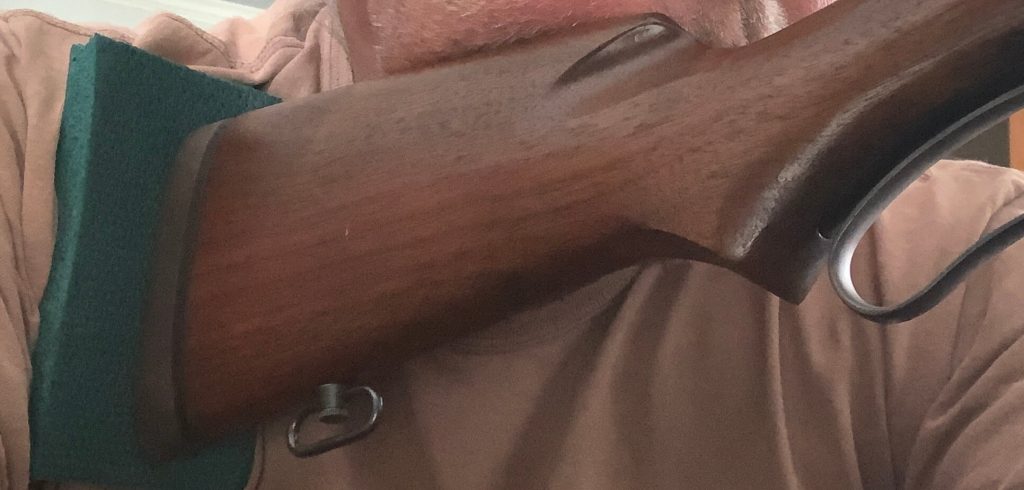
The thing that enticed me was that the 50 Alaskan accomplished all its work with relatively low pressures (35k CUP and less) thus allowing use in guns like the Marlin. The 450 Alaskan operates at much higher pressures and developed a reputation as being a very brutal recoiling rifle, not so with my Marlin 50 Alaskan. It wears a nice KickEez recoil pad, and recoil is strong but not brutal, the felt recoil of my 1886 in 45-90 feels much harder and it weighs more wearing a 26” octagon barrel, it also has a 1” thick KickEez pad. The two rifles push similar weigh bullets at similar velocities, yet the lighter 50 Alaskan is much more pleasant to shoot. Neither is a round you want to spend all day shooting from a bench, or without some gear to help with recoil. When checking sights from the bench, I’ll use extra padding between my shoulder and the gun. I also shoot from a supported standing position. I do not even notice recoil when hunting and wearing normal winter clothing.
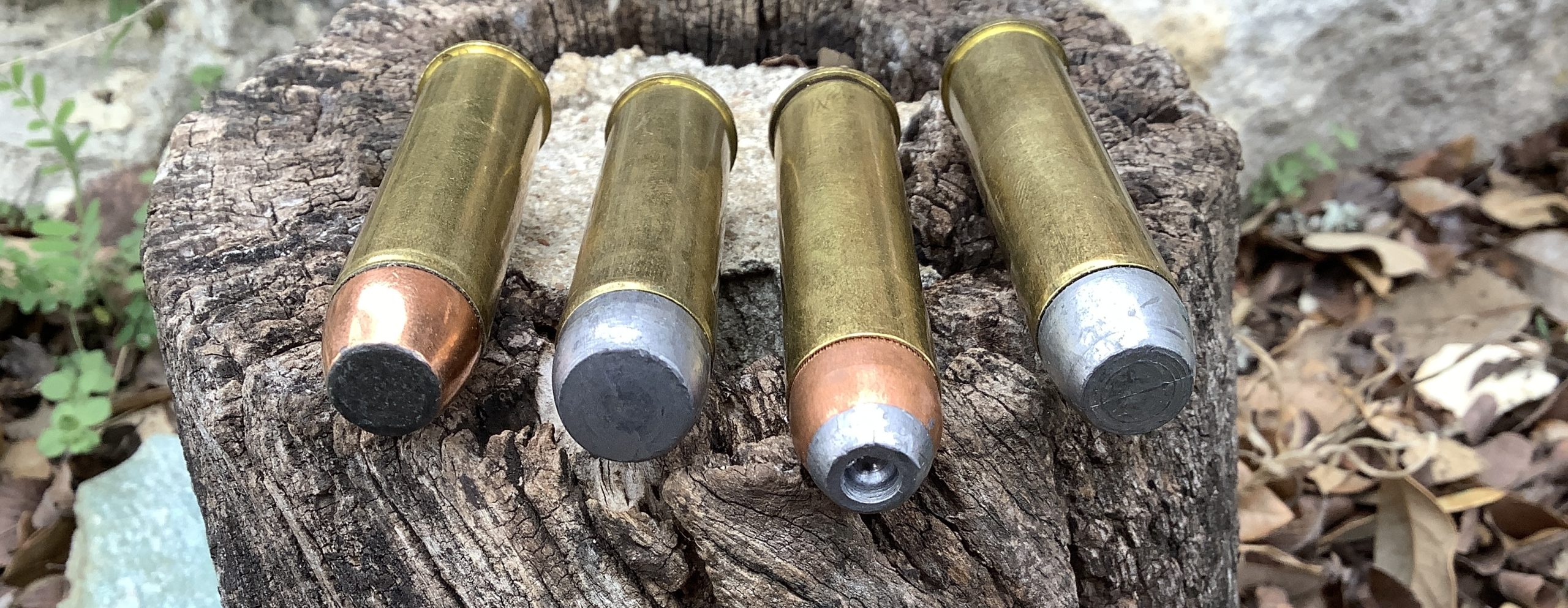
Speaking of velocity, I use moderately stout loads, nothing maximum but let’s call it 85-90% of max. My 465gr. bullets are going 1850fps, although maximum loads will push them at almost 2000fps, my 350gr. bullets are actually not much faster at 1900fps, but 2200fps is possible. The 450gr. A Frame, gets pushed at 1800fps, but again close to 2000fps is attainable with judicious loading and a 22” or 23” barrel. My powder choice is Reloder 7, however, anything suitable for the 45-70 is worth trying, H4198, H322, or IMR4198. The previously mentioned bullet used by Johnson made from cutting 50 BMG bullets, was done mainly out of necessity.
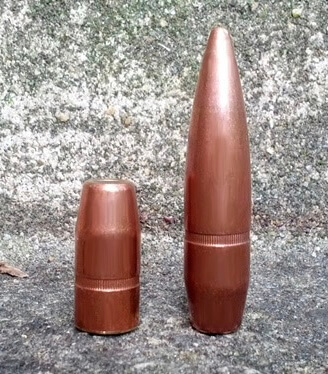
Good quality bullets, much less jacketed ones were scarce to nonexistent in those days. He would cut and then seat them base forward, doing so he created a 450 grain jacketed FP. In a 1988 interview he spoke of their crushing power on dozens of black bear and Kodiaks. He used 52.0 grains of IMR 4198 his homemade bullet clocked 1800fps and shot accurately. Today there is no need for such measures, manufacturers provide jacketed bullets as well as good quality cast bullets. Some monometal bullet makers produce some very impressive all brass and all copper projectiles, both expanding or fragmenting and solids. Cutting Edge bullets has an impressive line up of projectiles suitable for lever action mag tube use. Using their solids turns the 50 Alaskan into an impressive dangerous game gun suitable for the Big 6 of Africa
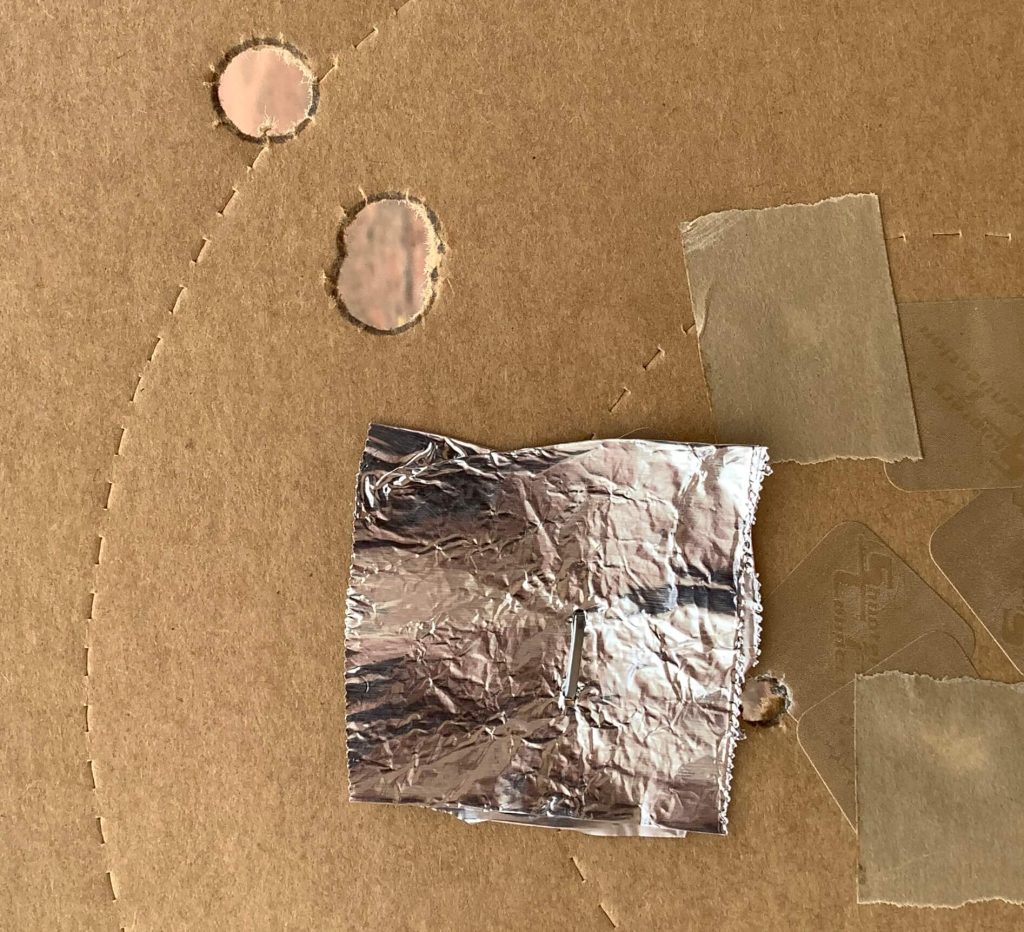
The trajectory of a 450gr. bullet at 1850fps when using a 150yd. zero, places a high point of 3” at about 100 yards. The drop at 200 yards is less than 8”, making a hold at just below the top of the back suitable for any big game. Although the Fifty was made for closer ranges, this trajectory is entirely suitable for general purpose hunting. If you’re hunting alder thickets, swamps, timber, or thick white brush in search of big game or game that can bite back the choice is an easy one. The 50 Alaskan is ready for the opportunity, if you’re a guide that needs light, fast, and handy. You need look no further than the 50 Alaskan, it’s been doing the job since the 1950’s and will keep on working in the hands of those that know it’s true potential.

The 45-70 may be the popular big bore lever action to the masses, but the 50 Alaskan is the pinnacle when it comes to leverguns and rough, tough, Big Bore stuff.
A special thanks to Lee Martin for his historical info on the “Harold’s” and the Fifty.
